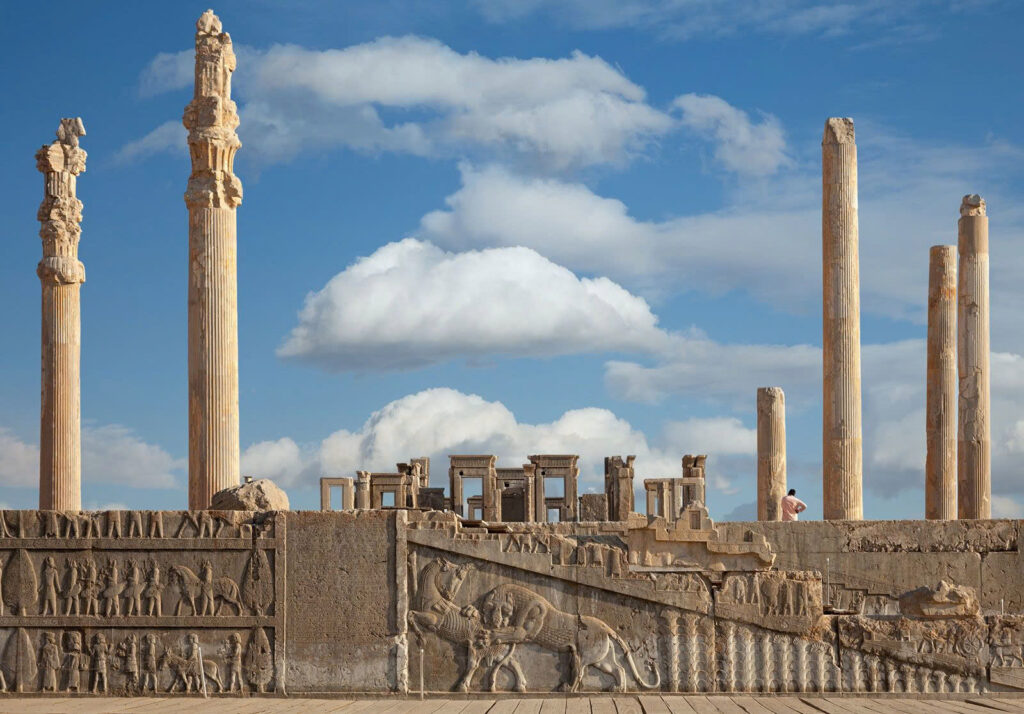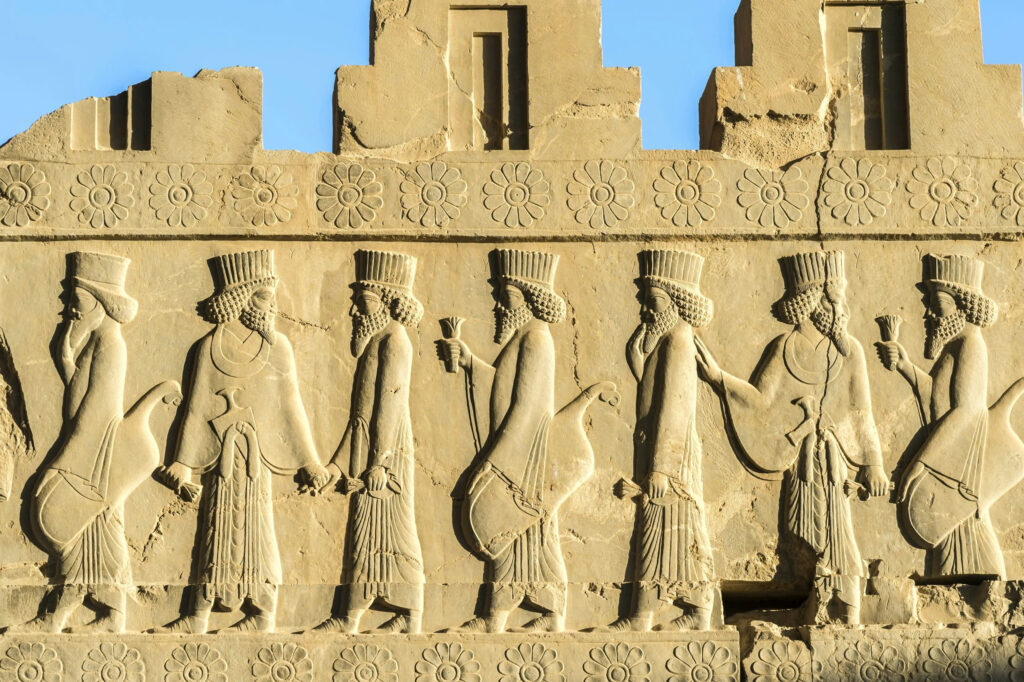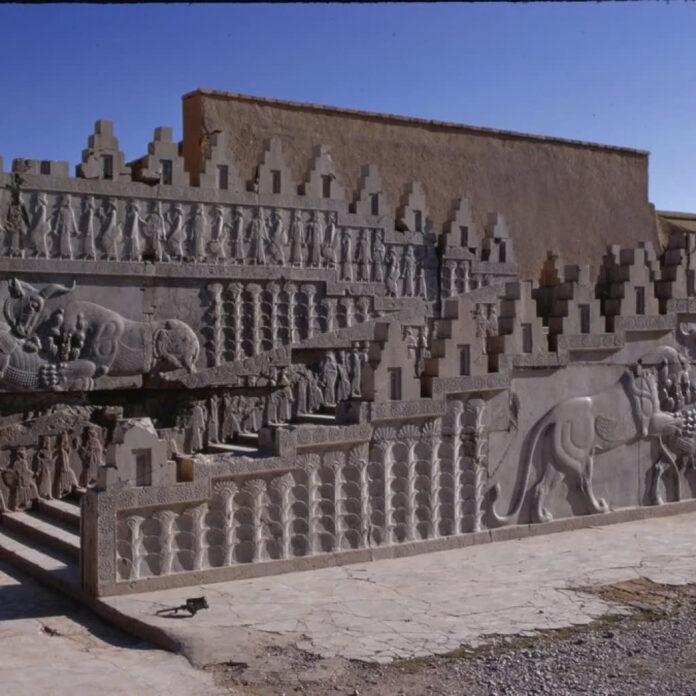In the heart of modern-day Iran stands a silent witness to history’s grandeur—Persepolis, the ceremonial jewel of the Achaemenid Empire. Among its magnificent ruins, the Apadana Staircase emerges as a stone canvas that narrates tales of power, diversity, and unity that defined one of antiquity’s greatest civilizations.
The Majestic Apadana: A Stage for Imperial Glory

When Darius I commissioned the Apadana Palace in the 5th century BCE, he envisioned more than mere stone and mortar—he created a theater where the empire’s might would be displayed for generations to come. This grand ceremonial hall became the beating heart of Persian royal life, hosting elaborate feasts and the spectacular Nowruz celebrations where the vastness of Persian dominion manifested in physical form.
Stone Narratives: The Empire in Relief
The staircase leading to this palace isn’t merely a functional element—it’s a meticulously crafted chronicle carved in limestone. Along its steps, 23 delegations from across the known world march eternally toward their king, each bearing distinctive gifts reflecting their homeland’s bounty: exotic animals from distant Ethiopia, precious metals from resource-rich regions, fine textiles from skilled artisans, and aromatic spices from eastern provinces.

What makes these reliefs remarkable isn’t just their artistic excellence, but their political message. Each delegation—whether Elamite, Egyptian, Indian, or Lydian—stands with equal dignity. Their varied dress, features, and offerings celebrate rather than diminish their cultural uniqueness, embodying the Persian administrative genius of respecting local customs while ensuring imperial loyalty.
Royal Imagery: Power Carved in Stone
The centerpiece of this stone narrative is the king himself—larger than life, enthroned with divine authority. This visual hierarchy wasn’t mere vanity; it communicated a sophisticated political philosophy where the monarch served as the linchpin holding together a diverse imperial tapestry.

The artistic influences visible throughout these reliefs—elements borrowed from Greek, Roman, Egyptian, and Mesopotamian traditions—tell another story: of Persia as a cultural crossroads where artistic expressions flowed freely across borders, creating something distinctly Persian yet universally resonant.
Video
A Legacy That Survived Flames
When Alexander’s armies set Persepolis ablaze in 330 BCE, they destroyed a palace but failed to erase its message. The enduring Apadana reliefs continued to speak across millennia, whispering secrets of ancient statecraft and cultural exchange to modern visitors.
Timeless Diplomacy Written in Stone
Today, as visitors stand before these ancient carvings, they witness more than expert craftsmanship—they observe a sophisticated blueprint for managing diversity that feels remarkably modern. The Achaemenid approach to imperial governance—balancing central authority with cultural autonomy—offers insights even in our contemporary world of complex international relations.

The Apadana Staircase remains Persepolis’s storyteller, its reliefs a testament to how an empire that celebrated its diversity rather than suppressing it created one of history’s most enduring legacies. In these stone delegations, forever marching toward their king, we find not just historical documentation but timeless wisdom about how different peoples might come together under common purpose while maintaining their unique identities.
As the Iranian sun casts changing shadows across these ancient figures throughout the day, they seem almost to move—continuing their diplomatic mission across time, reminding us that true imperial greatness lies not just in conquest but in the art of unifying diversity.

